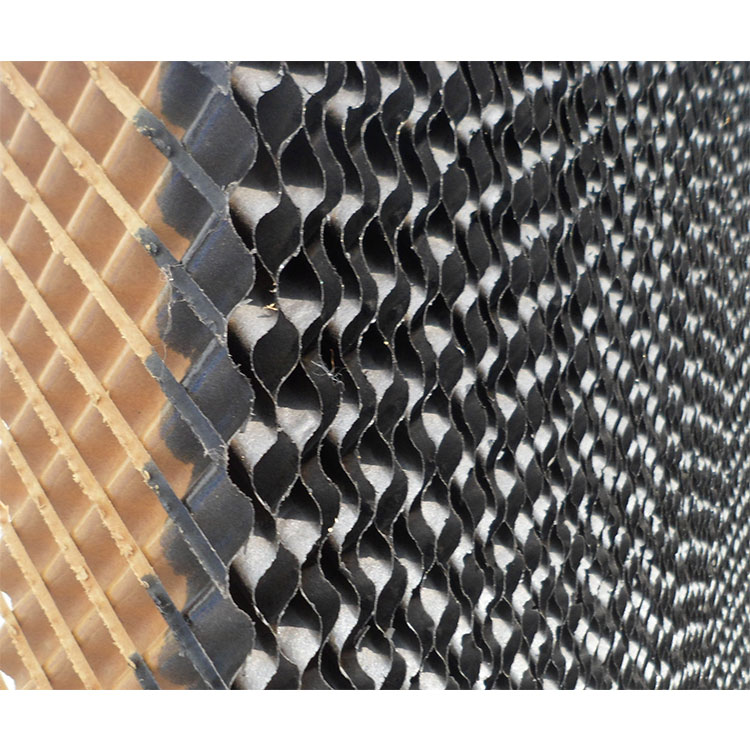Paper Cooling Pad: A Sustainable Solution for Comfort and Efficiency
2025-05-07
In today's fast-paced world, innovation plays a crucial role in improving our daily lives. One such invention that combines sustainability with functionality is the Paper Cooling Pad. This eco-friendly, cost-effective solution has gained popularity in various industries, especially in sectors where cooling and comfort are essential, such as in packaging, medical applications, and consumer products. In this article, we will explore what a paper cooling pad is, how it works, and its numerous advantages across different uses.

What is a Paper Cooling Pad?
A Paper Cooling Pad is a type of cooling solution made primarily from paper-based materials designed to absorb, dissipate, and regulate heat. Unlike traditional cooling pads made from plastics or metals, paper cooling pads offer an eco-friendly alternative that aligns with the increasing demand for sustainable products. These pads are typically composed of a porous structure that allows air to flow through, aiding in the evaporation of moisture and the removal of heat.
These pads are often made from layers of specially treated paper that possess moisture-absorbing properties. Some are also coated with cooling agents or materials that help enhance the pad’s ability to cool the surrounding environment. They are lightweight, flexible, and efficient in reducing heat buildup, making them perfect for various applications.
How Do Paper Cooling Pads Work?
The working principle of paper cooling pads is based on the process of evaporative cooling. When air passes through the paper pad, the moisture within the pad evaporates, absorbing heat and lowering the temperature of the air. This mechanism is particularly effective in dry or hot climates where moisture evaporation can significantly lower the surrounding temperature.
Paper cooling pads are designed with a unique structure that maximizes the surface area for moisture evaporation, thus improving the overall cooling efficiency. The natural fiber structure of paper allows for effective water retention, enabling the pad to remain cool for extended periods. As the water evaporates, the heat in the air is absorbed, resulting in cooler air that can help regulate temperature in a given space.
Applications of Paper Cooling Pads
1. Packaging and Transport:
One of the most common applications of paper cooling pads is in the packaging and transportation of perishable goods. In industries like food shipping, flowers, and pharmaceuticals, temperature control is critical. Paper cooling pads are used to keep products cool during transit, reducing the risk of spoilage and maintaining the quality of sensitive items. Their lightweight and recyclable nature make them ideal for packaging solutions that are both functional and sustainable.
2. Consumer Products:
Many consumer products, such as cooling pillows, mattress pads, and personal cooling devices, now incorporate paper cooling pads to enhance comfort. For example, a paper cooling pad can be used in pillows or mattresses to provide a cooling effect during hot weather, promoting a more restful sleep. The natural cooling properties of paper make these products eco-friendly alternatives to synthetic cooling materials.
3. Medical Applications:
Paper cooling pads also find use in medical and healthcare products. In cases where fever reduction is necessary, paper cooling pads are often used as an alternative to gel packs. They can be applied to the skin to provide a cooling effect, offering a comfortable and safe way to regulate body temperature. Additionally, they are used in certain wound care treatments, helping to keep dressings dry and cool.
4. HVAC Systems:
In some heating, ventilation, and air conditioning (HVAC) systems, paper cooling pads are used as a part of evaporative cooling systems. These systems use water to cool the air, and paper cooling pads are placed in the unit to facilitate moisture absorption and air cooling. This method is energy-efficient and more environmentally friendly compared to traditional air conditioning systems, making it ideal for industrial and commercial settings.
5. Sustainable Construction:
In the construction industry, paper cooling pads are being explored as an environmentally conscious alternative for thermal regulation in buildings. They can be used in the construction of walls, roofs, and flooring to help reduce the reliance on traditional air conditioning systems. Their sustainable nature makes them attractive for green building initiatives and energy-efficient design.
Advantages of Paper Cooling Pads
1. Eco-Friendly:
One of the standout features of paper cooling pads is their eco-friendliness. They are made from renewable paper materials, which are biodegradable and recyclable. Unlike plastic-based cooling products, paper cooling pads do not contribute to plastic waste and are an excellent option for sustainable practices in various industries.
2. Cost-Effective:
Paper cooling pads are affordable compared to other cooling solutions. They are made from relatively inexpensive materials, making them a budget-friendly option for businesses and consumers alike. Moreover, the fact that they are lightweight reduces shipping and handling costs, contributing to overall cost savings.
3. Lightweight and Portable:
The lightweight nature of paper cooling pads makes them highly portable. They can easily be transported, stacked, and installed in different applications, whether it's for packaging purposes, consumer products, or even medical cooling systems. Their portability ensures that they can be used in a wide range of settings without being cumbersome.
4. Efficient Cooling:
Thanks to their moisture-absorbing properties and unique design, paper cooling pads are highly efficient at cooling down spaces or products. The evaporative cooling effect they generate helps reduce the temperature significantly, ensuring comfort and preventing damage to temperature-sensitive items during transport.
5. Customizable:
Paper cooling pads can be customized to suit specific needs. Whether it’s adjusting the thickness, surface area, or the cooling capacity, these pads can be tailored to meet the requirements of various industries. This flexibility makes them versatile for multiple applications, from packaging to medical uses.
Challenges and Considerations
While paper cooling pads offer numerous benefits, there are a few challenges to consider. One of the main concerns is that they require regular maintenance, especially if they are used in humid environments. They need to be kept dry to maintain their cooling efficiency, and moisture buildup could lead to the growth of mold or mildew. Additionally, the cooling effect is more effective in dry conditions, and in highly humid climates, they may not perform as well as other cooling solutions.
Conclusion
In conclusion, paper cooling pads represent an innovative, sustainable, and cost-effective solution for a variety of cooling needs across different industries. From packaging and medical uses to consumer products and HVAC systems, the versatility and efficiency of paper cooling pads make them a valuable tool in improving comfort and maintaining optimal conditions for temperature-sensitive products. As the world moves toward more environmentally friendly practices, paper cooling pads are undoubtedly poised to become a key player in the future of cooling technologies. Their combination of sustainability, affordability, and practicality makes them an excellent choice for businesses and consumers looking to make a positive impact on the planet while enhancing their cooling systems.


